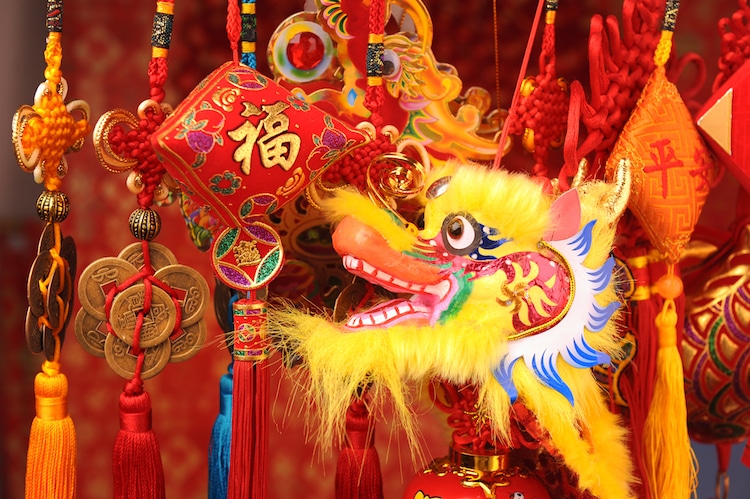
Photo: Stock Photos from asharkyu/Shutterstock
Happy Chinese New Year! Every winter, this enchanting holiday is honored by millions of people across the globe, making it one of the world's most widespread celebrations.
While there's a chance you're familiar with the festival, you may not know the significance and symbolism behind some of its most important customs. If that's the case, you're in luck! Here, we take a closer look at the history and elements of China's Lunar New Year in order to understand what makes this fantastic festival so important.
What is Chinese New Year?
Chinese New Year is a holiday that marks the start of the new year according to the traditional Chinese calendar. The holiday begins on the second new moon after the winter solstice and concludes during the full moon that occurs 15 days later.
Because of its reliance on the lunar phases, the festival falls on different days each year. Similarly, a rotating cast of 12 zodiac animals are celebrated in accordance with the holiday, with one animal symbolizing a single year.
This year, the festival begins on January 22 and ends on February 5. And, according to the lunar calendar, 2023 is the Year of the Rabbit.
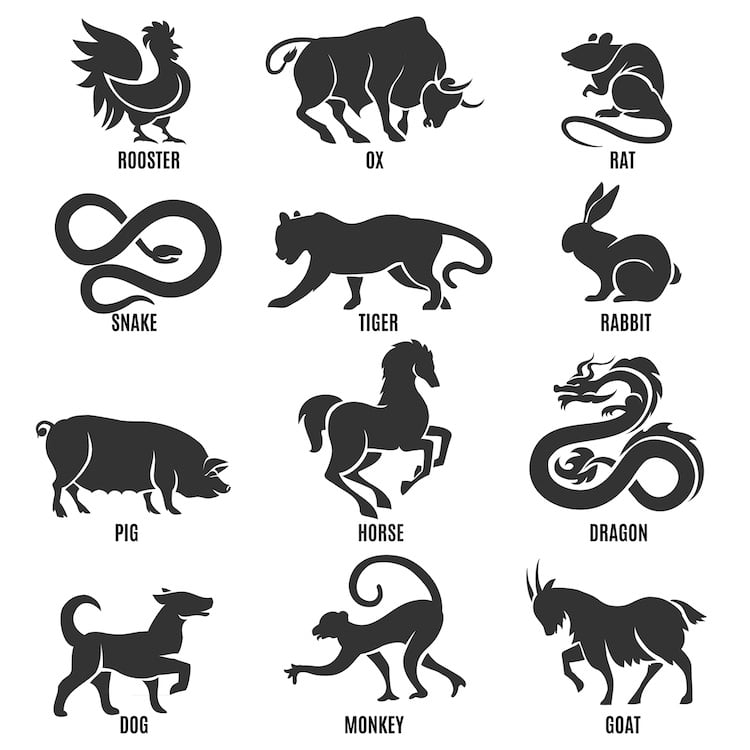
Photo: K3star/Depositphotos
Spring Festival
Chinese New Year is also known as chunjie or the Spring Festival in China. Although technically the holiday falls during the wintertime, it marks the ending of cold weather and the anticipation of spring and new beginnings. In fact, Spring Festival is recognized as a public holiday in China, and people receive seven days off to enjoy the celebration.
The main festivities start on January 14 with Little Year, a day of preparation for the New Year. On January 21, New Year's Eve, the reunion dinner occurs. January 22 marks the first day of the New Lunar Year and the first day of the Spring Festival. The festival officially ends with the Lantern Festival on February 5.
Origins of the Holiday
The exact date of the first festival is unknown. However, it likely started during the Shang Dynasty, China's second dynasty that lasted from approximately 1600 until 1046 BCE. During the Han Dynasty, a period that took place between 206 BCE and 220 CE, Emperor Wu established a mid-winter date for this celebration—a designation that remains to this day.
Mythology
Nian
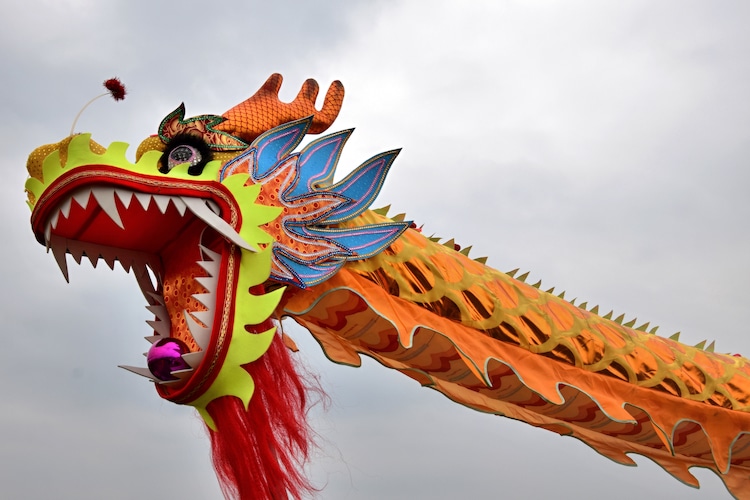
Photo: Stock Photos from Lao Ma/Shutterstock
Much like its inaugural date, the mythological origins of Chinese New Year are not entirely clear. However, many people today attribute the bulk of the holiday's traditions to the tale of Nian, a lion-headed beast.
According to legend, Nian lived in the mountains most of the time. However, around the new year, he would make his annual descent into a nearby village to eat children and livestock. In order to ward the frightening creature away from their homes, villagers would make loud noises and surround themselves with the color red, a hue that Nian was known to dislike.
These tactics involved lighting off firecrackers, wearing crimson-colored clothing, and hanging red lanterns, scrolls, and other decorations around their homes every year.
The Zodiac
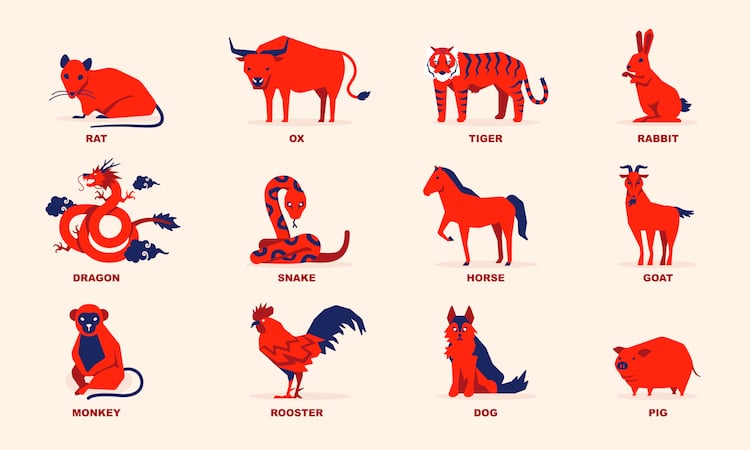
Photo: Stock Photos from Cube29/Shutterstock
The Chinese Zodiac comprises a dozen animals that represent each of the zodiac cycle's 12 years.
While this number is an approximation of Jupiter's 11.85-year orbital period, the animals themselves are based on neither astronomy not astrology. Instead, they're rooted in mythology. Specifically, they are believed to have been selected following a “Great Race” that saw them cross the finish lines in this order: Rat, Ox, Tiger, Rabbit, Dragon, Snake, Goat, Horse, Monkey, Rooster, Dog, and Pig. The lunar calendar follows this succession, with the rat starting the cycle and the pig concluding it.
Each animal in the zodiac is connected to a season, direction, and natural element. Along with traits traditionally associated with each animal (oxen are strong, while tigers are brave, for example), these classifications are believed to influence our personalities.
If you aren't sure what your Chinese Zodiac sign is, you can find out using an online calculator.
Important Customs
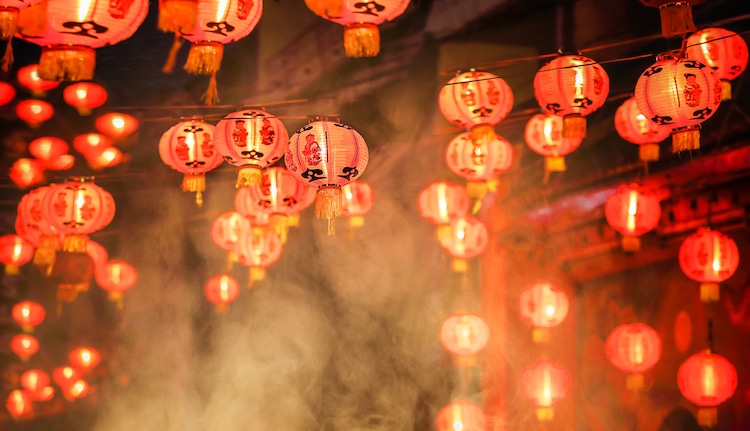
Photo: Stock Photos from Toa55/Shutterstock
Countless traditions have come to define Chinese New Year. Here, we explore some of the most prevalent and popular of these customs.
The Reunion Dinner
On New Year's eve, the day before the festival kicks off, families prepare and partake in an important meal called the reunion dinner. For this special get-together, family members come from far and wide to welcome the new year and wish each other luck for the 12 months to come.
A traditional reunion dinner includes 8 courses topped off with white rice, tea, and fruit for dessert. According to Chinese American Family: “The procession of dishes should include a cold appetizer, soup, three main meat courses, a vegetable dish, noodles and fried rice.”
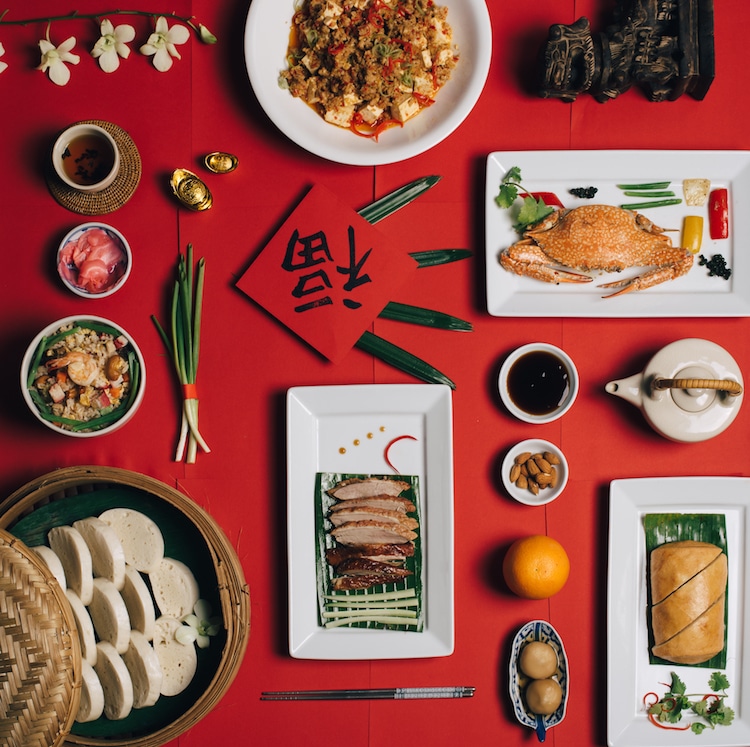
Photo: Stock Photos from 9MOT/Shutterstock
While specific dishes range from family to family, many foods are selected with both taste and terminology in mind. “For example,” Chinese American Family explains, “the word for fish yu, sounds like the word for ‘extra' or ‘surplus,' making it an indispensable part of the Chinese New Year meal.” Other food homonyms include tangyuan, a rice ball whose name sounds like the term for “getting together,” and tangerines, whose title is reminiscent of the word “luck.”
Decorations
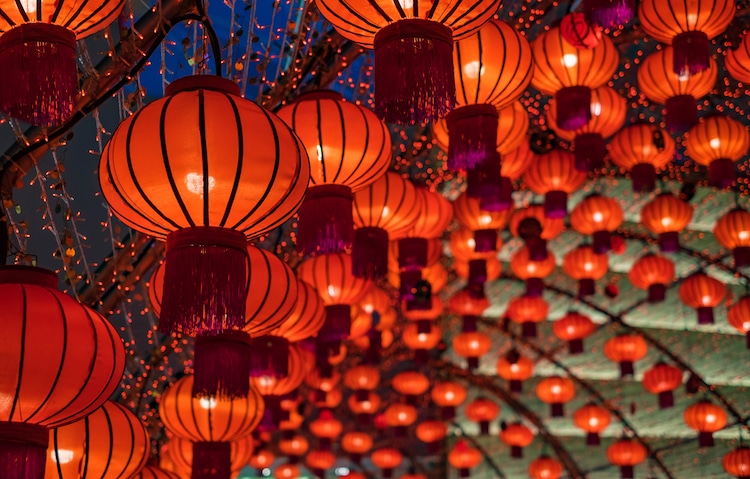
Photo: Stock Photos from Ekkalak Ngamjarasvanij/Shutterstock
This use of homonyms is also prevalent in decoration. For example, many people hang a red, diamond-shaped banner with the fú (“fortune”) character written on it in an upside-down manner. It is oriented in this unusual way because “upside-down” is a homonym of “to arrive.” Therefore, arranging the banner in this way implies that fortune or good luck will arrive.
Similarly, in the spirit of Nian myth, people decorate their home with red decorations, including paper lanterns, cut-outs, and door couplets, or banners adorned with poetry. Due in part to this legend, red has come to symbolize “good luck,” furthering its role as the festival's most important color.
Red Envelopes
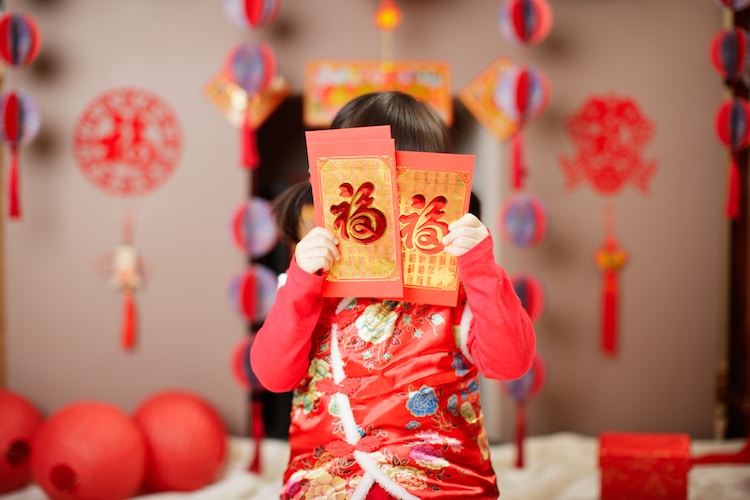
Photo: Stock Photos from Mcimage/Shutterstock
People also exchange red envelopes (also often called “red pockets”) during the festival. Filled with “lucky money,” the packets are most often given to children from parents and grandparents. The money inside the envelope symbolizes a blessing for the coming year, and originally would have been given in the form of coins tied with a red string.
Firecrackers
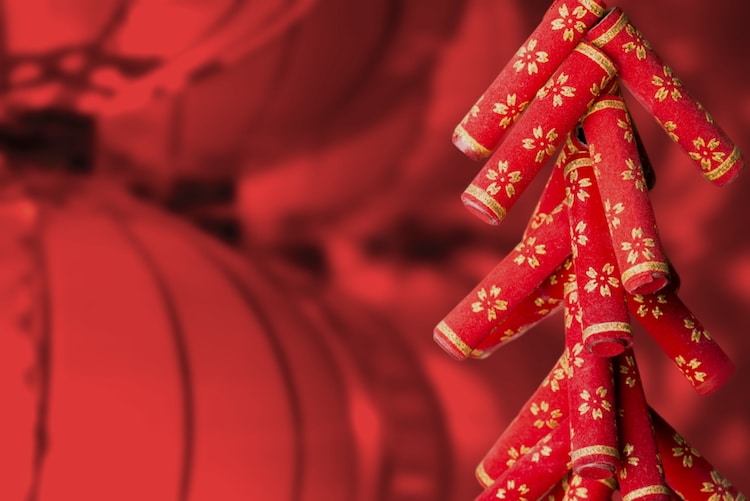
Photo: Stock Photos from MountainsCreative/Shutterstock
Also inspired by the story of Nian, firecrackers are deeply engrained in Chinese New Year celebrations. Much like their use against Nian, firecrackers have traditionally been employed as a way to ward off evil spirits.
While their precise timing during the festival varies from region to region, many people set off firecrackers before the reunion dinner as a way to alert their ancestors that the festivities are starting. It is also customary to light them at the stroke of midnight on New Year's Day, during the Lantern Festival on the 15th day, and during parades.
Festive Dances
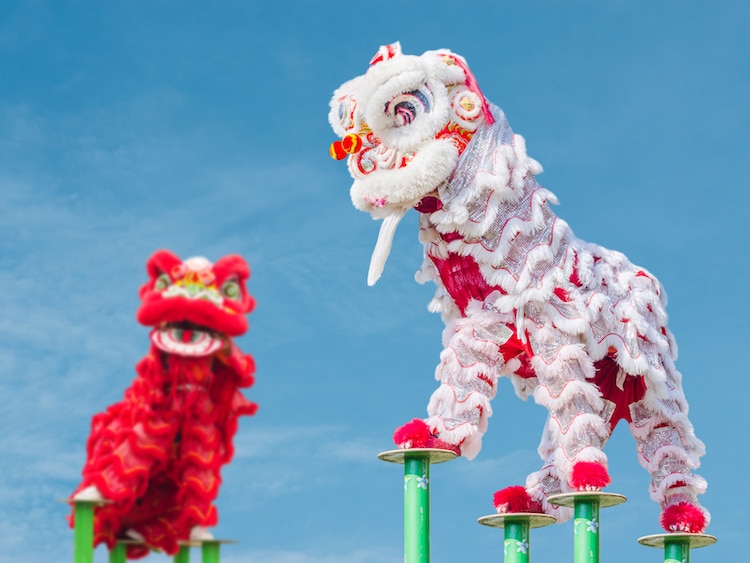
Photo: Stock Photos from all_about_people/Shutterstock
In addition to firecrackers, typical Chinese New Year parades also feature two types of choreographed dances: the lion dance and the dragon dance.
Lion dancers are inspired by Nian, who is believed to have had the head of a lion. To perform a lion dance, two dancers hide beneath a lion-like costume, which traditionally comprises a papier–mâché head, bamboo frame, and fur-lined fabric. They move in a quick, cat-like way and often perform stunts.
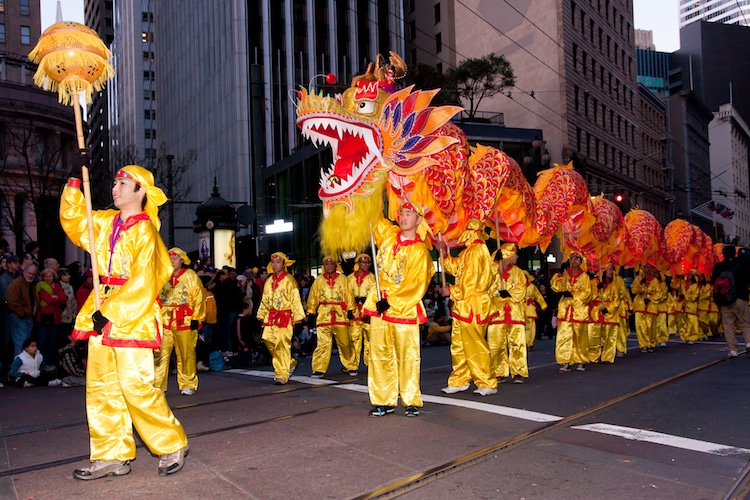
Photo: Stock Photos from Radoslaw Lecyk/Shutterstock
A dragon dance requires a team of dancers who hold up a serpentine-like dragon structure. The body comprises several sections held up by poles, and is joined to a tail and decorative head. Often, the dragon follows a person holding an orb on a stick, meant to represent a “pearl of wisdom.”
Traveling
The Chinese New Year overlaps with a period of heightened traffic in China called Chunyun or the Spring Festival Rush. It begins about 15 days before the start of the Lunar New Year, and lasts for 40 days. Since being together with your family is an important part of this holiday, it contributes to this phase of intense traffic—sometimes referred to as the largest annual human migration in the world.
Chinese New Year Today
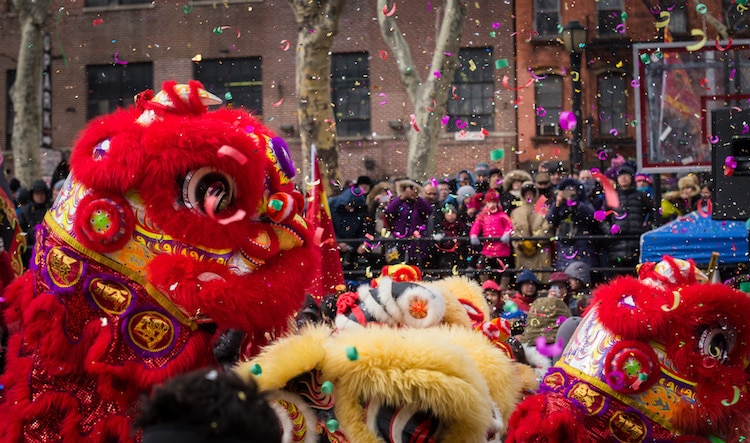
Photo: Stock Photos from Kuznetsova Julia/Shutterstock
Today, Chinese New Year is observed by families all over the world and in countries with large Chinese populations. Many major cities host annual parades and other events that incorporate traditional customs and keep the holiday's spirit alive.
This article has been edited and updated.
Related Articles:
30 Creative 2023 Calendars To Keep You Organized in the New Year
Runner Celebrates the Lunar New Year by Tracking His Route in the Shape of a Tiger
Día de los Muertos: How Mexico Celebrates Its Annual “Day of the Dead”
Valentine’s Day: The Unromantic Origins of This Romantic Holiday






















































































